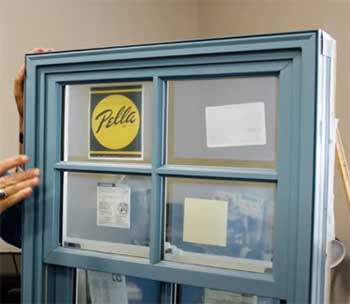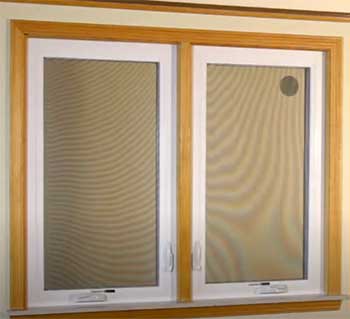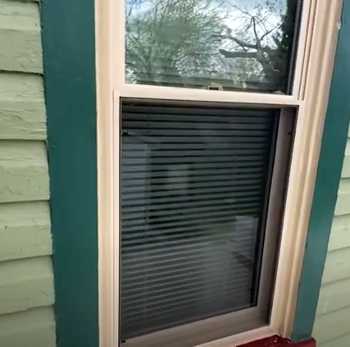If you’re in the market for new windows, you’ve probably come across two big brand names – Pella and Wallside. Both companies make high-quality windows, but which is the better option for your home?
In this comprehensive guide, we’ll compare Pella and Wallside windows side-by-side, looking at factors like materials, energy efficiency, cost, warranties, and more.
Read on for an in-depth analysis of the pros and cons of these two popular window brands.
A Brief Comparison Table
| Comparison | Pella | Wallside |
| Materials | Wood, fiberglass, vinyl | Vinyl only |
| Energy Efficiency | Very good, U-factors as low as 0.17 | Good, U-factors around 0.27 |
| Styles | Wide selection including custom shapes | All popular styles, less customization |
| Cost | Premium pricing, 25-50% more than Wallside | Budget-friendly pricing, 20-30% less than Pella |
| Warranties | Lifetime limited, 20-year glass | Lifetime limited, 20-year glass |
| Overall | Excellent quality and features, very customizable, expensive | Good performance and durability, affordable, fewer options |
Pella Windows Overview
Founded in 1925, Pella is one of the oldest and most recognized names in the window industry. They offer a wide selection of window styles, materials, and features.
Some key things to know about Pella windows:

- Materials – Pella windows come in wood, fiberglass, or vinyl. Their patented wood composite is an alternative to natural wood.
- Styles – Available in single-hung, double-hung, casement, awning, sliding, and specialty shapes. Numerous grille patterns.
- Efficiency – Their most efficient line is the Endura. Meets ENERGY STAR requirements across the country.
- Warranty – Limited lifetime warranty on most window lines. Glass warranty of 20 years.
- Cost – Pella is generally one of the more expensive window options. Their products are premium-priced.
Pella windows are known for their quality craftsmanship and long-lasting durability. They have excellent thermal efficiency and an array of customization options. On the downside, they come with a higher price tag.
Wallside Windows Overview
Wallside, also known as AMI Windows, is a midwestern manufacturer founded in 1961. They market themselves as a more affordable alternative to companies like Pella.
Key facts about Wallside:

- Materials – Vinyl frames with glass options including clear, tinted, tempered, and laminated.
- Styles – Offer single-hung, double-hung, sliding, casement, awning, bay, bow, garden, and picture models.
- Efficiency – Meet ENERGY STAR requirements in all 50 states. Their triple pane glass boosts efficiency.
- Warranty – Lifetime limited warranty on most windows. Glass warranty of 20 years.
- Cost – Wallside has competitive pricing, making them a budget-friendly option. Estimates are often 20-30% less than Pella.
Wallside’s vinyl windows offer quality and energy savings. While not as customizable as Pella, their range of efficient and affordable options make them appealing for many homeowners.
Now that we’ve covered the basics on each brand, let’s do a detailed comparison between the two.
Key Differences Between Pella And Wallside Windows
Here we’ll break down how major factors like materials, efficiency, styles, cost, and warranties weigh up between Pella and Wallside.
Window Materials
One of the biggest differences between these brands is the material options available.
Pella
Pella offers windows in:
- Wood – Oak, pine, alder, and maple. Their patented wood composite resists shrinking and swelling.
- Vinyl – Heavy-duty, low-maintenance, and energy efficient. Offered in a variety of colors.
- Fiberglass – Durability and insulation of wood with low maintenance. Won’t warp or crack.
They have a leg up over Wallside when it comes to material choices. Wood and fiberglass give Pella products added beauty and strength.
Wallside
Wallside windows only come in:
- Vinyl – Durable, energy efficient, and affordable. Available in white or beige.
While vinyl performs well and is low maintenance, it lacks the elegance and customization of Pella’s selection. Wallside’s color choices are also more limited.
Overall, Pella offers superior material options like fiberglass and real wood veneers. Wallside’s sole vinyl offering gets the job done but is less customizable.
Energy Efficiency
Both brands meet or exceed ENERGY STAR qualifications. However, there are some differences when you dig into the nitty-gritty details.
Pella
- U-factors as low as 0.17 on Impervia fiberglass models with triple pane glass.
- Optional triple pane glass for improved insulation.
- Foam insulation injected into frame and sash on Impervia line.
- Optional argon/krypton gas filled windows.
- Optional Low-E (low emissivity) glass coatings to reduce heat transfer.
Wallside
- U-factors around 0.27 with double pane glass.
- Triple pane models offered for colder climates.
- Silicon injected into frame for insulation.
- Low-E coatings standard.
- Optional argon gas filled glass.
Both brands offer impressive technology like triple glazing and Low-E coatings. But Pella eeks out the win with even lower U-factors down to 0.17 and more standard features like foam-filled frames.
The verdict: Pella windows perform slightly better overall from an energy efficiency standpoint. Wallside still offers thermal improvements over builder-grade windows.
Window Styles
Pella and Wallside both carry a wide selection of styles. Here’s how they compare:
Pella

- Single-hung
- Double-hung
- Casement
- Awning
- Bay and bow
- Sliding
- Garden windows
- Specialty shapes like circles, arches, and octagons
Lots of customization options with grille patterns, hardware finishes, wood veneers, exterior color pairings, etc.
Wallside
- Single-hung
- Double-hung
- Sliding
- Casement
- Awning
- Bay and bow
- Garden
- Picture windows
More limited customization – only offered in white or beige vinyl. But Wallside still carries all the most popular styles.
Both match up fairly evenly when it comes to style availability. One advantage for Pella is the ability to get specialty shape windows and more exterior customization.
For window styles and selection, it’s generally a draw between Pella and Wallside. Both carry styles for just about any home.
Cost Comparison
One of the major differences between Pella and Wallside is cost. Here’s how they compare:
Pella
- Premium-priced – 25-50% higher than Wallside
- Average installed cost around $600-$1000 per window
- More expensive designer lines like Architect Series with higher grade materials
Wallside
- Mid-range pricing, around 20-30% less than Pella
- Average installed price of $300-$600 per window
- Budget-friendly with frequent discounts/promotions
In terms of affordability, Wallside is the clear winner. You’ll easily spend $200+ more per window with Pella. Of course, the higher cost comes from premium materials and features.
For affordability, Wallside windows provide better value. Pella offers luxury if budget isn’t a concern.
Warranties
The warranty coverage is actually very similar between Pella and Wallside.
Pella offers:
- Lifetime limited window warranty – Covers defects in materials and workmanship. Transferable.
- 20-year glass warranty – Defects in glass panels and insulation.
Wallside also provides:
- Lifetime limited window warranty – Defects in materials and workmanship. Transferable.
- 20-year glass warranty – Insulated glass unit failures.
Both brands offer long-term assurances against window defects. Pella extends the lifetime warranty to cover exterior aluminum cladding as well.
For most homeowners, the two warranties are virtually identical. We’ll call warranties a tie between Pella and Wallside.
Which Brand Is Better?
With the major factors compared, let’s summarize which brand comes out on top overall:
Pella
- More material choices – wood, fiberglass, vinyl
- Slightly better energy efficiency
- More customizable styles and options
- Premium products with luxury features
- Much higher prices – 25-50% more
Wallside
- Only vinyl material but still durable and efficient
- Very good insulation, meets ENERGY STAR
- Wide range of affordable styles
- Budget-friendly prices, 20-30% less than Pella
- Good warranties and quality
While Pella takes the lead in materials, efficiency, and customization, Wallside still holds its own in terms of features and performance. And Wallside’s prices are far more affordable for the average homeowner.
Ultimately, Pella is the winner if you want premium features, materials, and energy savings. The trade-off is a much higher cost.
For a high-quality but affordable solution, Wallside windows are an excellent choice. They provide good insulation, durable materials, and attractive styling at reasonable price points.
Either brand is likely to please homeowners seeking new windows. Let your budget, material preferences, and desired features guide you between Pella and Wallside.
Frequently Asked Questions (FAQ)
For more insights, here are answers to some common questions when comparing Pella vs Wallside:
Some brands comparable to Pella in terms of features and quality include:
1. Andersen Windows
2. Marvin Windows
3. Milgard Windows
4. Jeld-Wen Windows
5. Kohler Windows
These brands are in the same premium tier as Pella and offer similar materials, efficiency, and warranties. Expect prices also comparable to Pella.
As a mid-range vinyl product, Wallside windows typically last 25-30 years. Their lifetime limited warranty covers defects for as long as you own the home. With proper care and maintenance, Wallside windows should perform for decades.
Pella and Andersen are extremely close competitors. Both make excellent quality windows. Key differences:
Materials – Andersen has more fiberglass options, Pella offers wider selection of wood species.
Warranties – Andersen has slightly longer glass coverage at 20 years to Pella’s 10 years.
Cost – Comparable pricing, with Pella generally 5-10% cheaper.
Efficiency – Negligible differences, both meet strict performance standards.
Overall, it’s nearly a toss up between these two big brands. Andersen may have a slight edge in material selection while Pella is often cheaper.
While expensive, Pella windows deliver lasting value that can justify the higher investment, including:
1. Real wood construction and other premium materials.
2. Superior energy efficiency, especially the fiberglass models.
3. Innovative noise-reducing features.
4. Unique built-in blinds, shades, etc.
5. More robust warranty protections.
If these benefits are important to you and the increased cost fits your budget, Pella windows are an excellent long-term choice. Their quality and performance are hard to beat.
Final Thoughts
When choosing new windows for your home, Pella and Wallside both rise to the top as reputable brands. Pella offers stunning high-end products at premium prices. Wallside provides attractive, budget-friendly options for cost-conscious buyers.
Carefully weigh what matters most – budget, materials, efficiency, warranties, styles, etc. This will guide you to the right brand. With either Pella or Wallside, you can feel confident investing in a quality window solution built to last for years to come.
